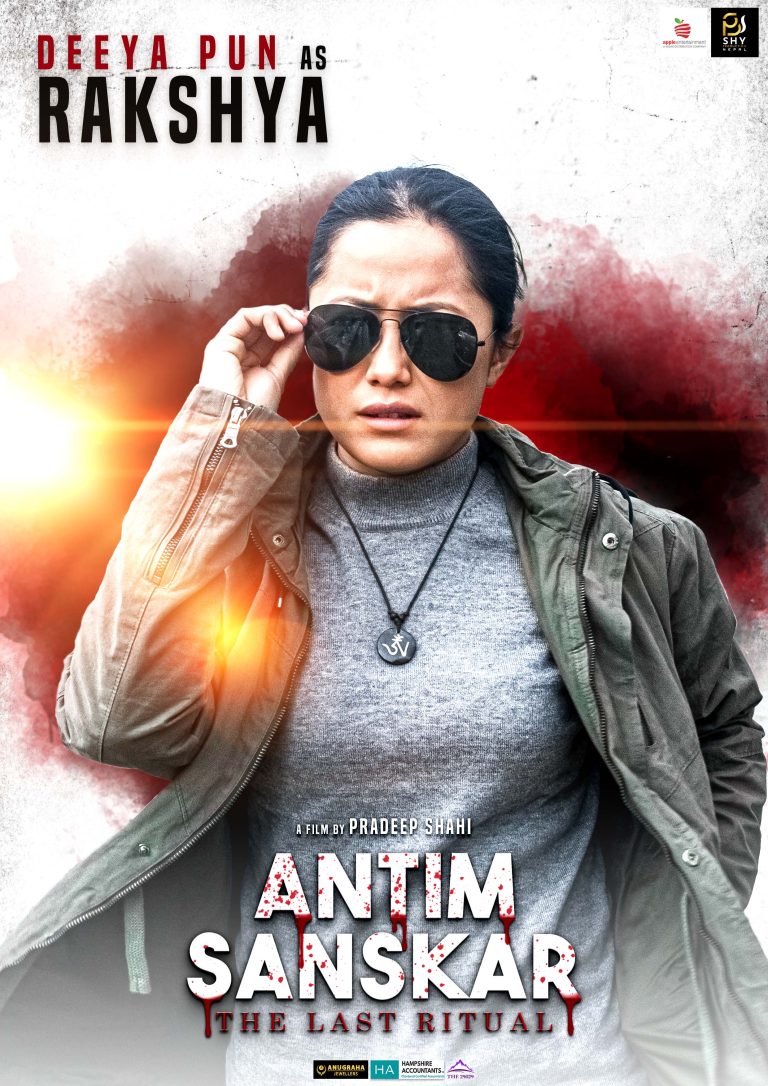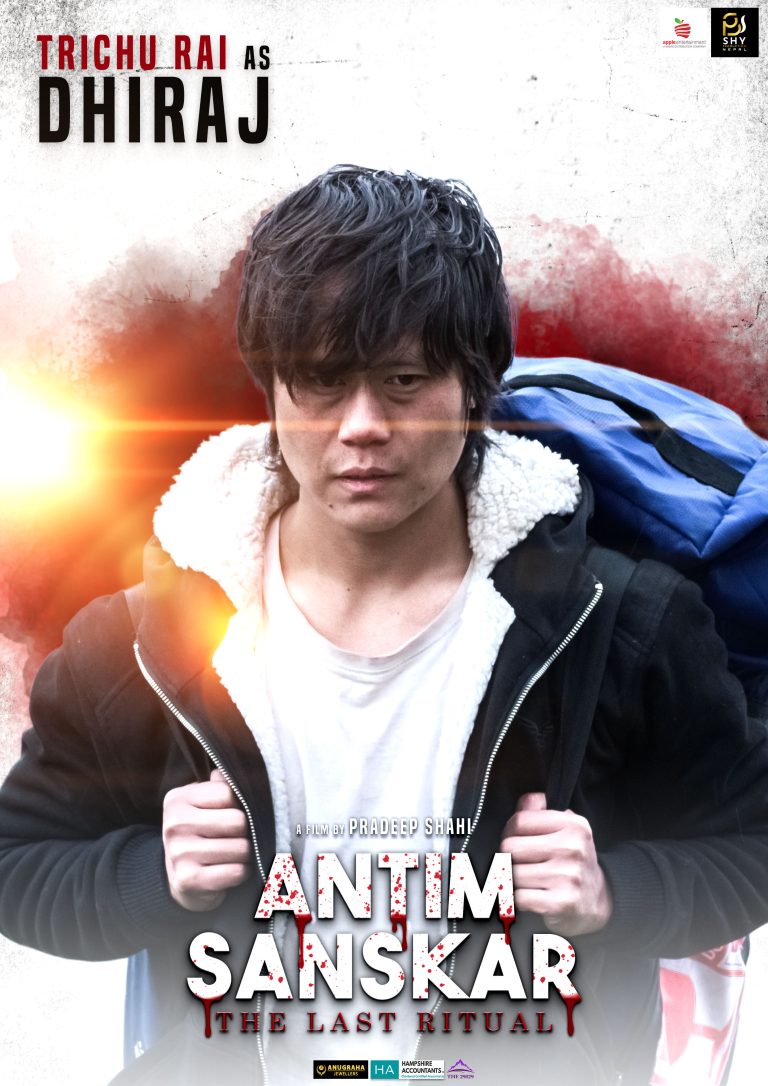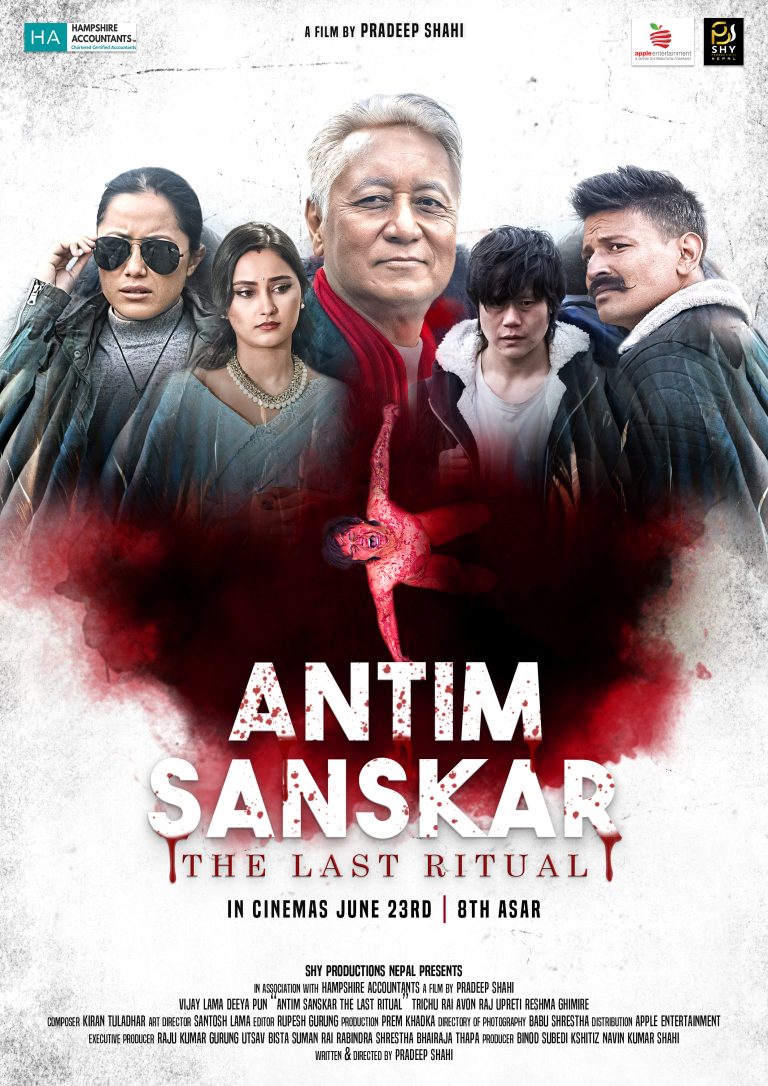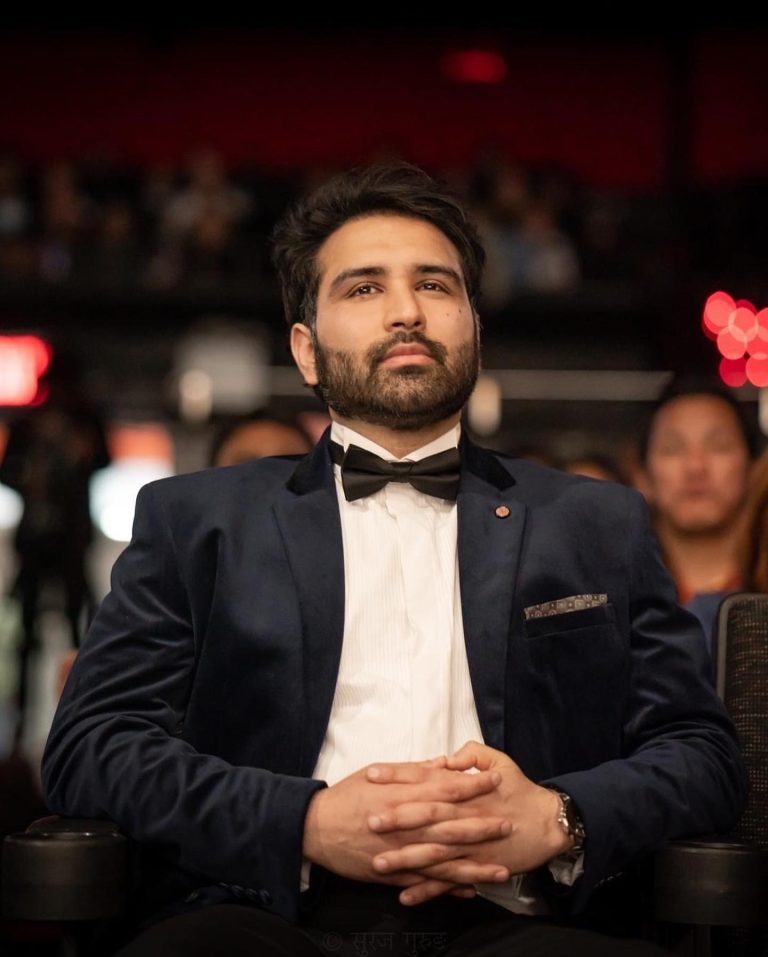Pradeep Shahi
Director of
The Last Ritual (Antim Sanskar)
A complete interview with Pradeep Shahi
We would like to express our sincere gratitude to director Pradeep Shahi for taking the time to answer our questions.
Whole team of Liverpool Indie Awards is wishing you the very best in all your future projects. We hope to see more of your exceptional work in the years to come. Thank you once again!
In the heart of THE LAST RITUAL, a psychological thriller, unfolds the enigma of a filmmaker’s vanishing act. The narrative centers on the young and trailblazing DSP Rakshya, tasked with unearthing the truth behind the director’s disappearance. As a brilliant detective with a hidden past and a struggle against alcoholism, Rakshya navigates the case. Simultaneously, the filmmaker’s son conceals his own mysteries, embarking on a solitary expedition to the Himalayas clutching a conspicuous oversized blue bag. This gripping murder mystery unfurls against the backdrop of the highest peaks, culminating in a jolting revelation.
My inspiration stems from my curiosity and deep respect for a rare global tradition found in the mountains of Nepal and Tibet. While rooted in religious funeral practices, it beautifully underscores the connection between humans and nature.
I aimed to infuse a Nordic-British murder mystery essence into my homeland, Nepal, through a cinematic narrative. While the industry here is relatively young and boasts skilled artists and filmmakers, the mass audience predominantly leans toward Bollywood-style commercial films. These films often revolve around love stories, societal matters, and obligatory song-and-dance sequences. Deliberately deviating from this norm, I chose to create a movie with a distinct texture and palette. This endeavor represents my modest contribution to introducing innovative storytelling in the Nepalese film industry. Collaborating with both seasoned and novice actors, we embarked on crafting a groundbreaking film.
Convincing my producers to embrace a radically distinct path from other commercial films proved to be a formidable challenge. Yet, the potency and contemplative nature of the story managed to captivate their commitment. Their unwavering backing bestowed upon me robust support and the liberty to chase my artistic vision. The bond I shared with my director of photography was exceptionally profound; our seamless communication from pre-production onward culminated in the creation of a visually stunning film. As for the rest of the team, I’m appreciative that they followed my lead and creative perspective, ultimately bringing our film to fruition.
Shooting amidst the Himalayas at altitudes exceeding 5000m posed a formidable undertaking. I owe immense credit to my exceptional cast and crew, who embarked on this adventure alongside me. Reflecting on it now, the journey was a whirlwind of experiences, a truly once-in-a-lifetime occurrence. Beyond the physical demands, straying from conventional storytelling to embrace an entirely unique narrative proved to be a daunting test for me as a writer/director. However, with a committed cast and crew by my side, I successfully surmounted these challenges. Witnessing the world I crafted come to life on the grand cinema screen was an incredibly gratifying feeling.
The movie’s climax features a bold moment involving a seasoned Nepalese actor and a newcomer, both appearing in a nude scene. This intense and somewhat unsettling scene, tied to themes of death and gore, may be challenging for some viewers. However, the profound and exquisite meaning underlying it is truly remarkable. Being able to offer a glimpse into these unspoken traditions stands as one of the highest honors in my life. I hold deep gratitude for the courage displayed by these two actors, who fearlessly defied conventions and embraced nudity for this scene. Nudity remains a largely sensitive topic in Nepal, making the bravery exhibited by these actors in the climax all the more commendable and honorable.
Observing the film from the audience’s standpoint, naturally, they offer their own suggestions and feedback. As the director, I hold a strong belief in my storytelling and am content with the final result. Yet, as directors, we strive for nearly flawless execution, and a few aspects often appear as opportunities for improvement. Reflecting on my experience directing my second feature film, I’ve come to realize the significance of effective communication. While fostering creativity comes relatively easily, articulating that creativity stands as the most challenging aspect. Therefore, my advice to aspiring filmmakers is to dedicate extra time to honing their communication skills, as it can prove immensely beneficial.
“1915 Legend of the Gurkhas” stands as an authentic recounting of a World War I tale, marking my inaugural feature film endeavor. Crafted on a modest budget of £30,000 through crowdfunding, and fueled by the dedication of a volunteer team, this project holds a special place in my heart. Not only did it afford me the privilege of bringing to life a narrative honoring my valiant Gurkha ancestors, but it also served as an inspiration to budding filmmakers, illustrating that with audacious dreams and determination, the seemingly impossible can materialize.
Spanning 30 days of filming within the confines of trenches, and enduring the less-than-ideal conditions of a fly-infested caravan, the experience was far from conventional. Yet, the motivation I drew from my committed cast and crew, primarily hailing from non-cinematic backgrounds and volunteering their efforts, instilled in me an unshakable belief in the resilience of the human spirit when fueled by unwavering dedication.
Having directed two low-budget features, I may not possess an extensive pool of experiential advice, but a lesson I’ve gathered is to never let your inner passion wane. In the face of numerous rejections or countless “no’s,” avoid allowing this negativity to consume you. Instead, channel it into a driving force that intensifies your yearning and ambition. Equally crucial is the company you keep; gravitate towards individuals with optimistic mindsets. And as you ascend, ensure these same individuals remain by your side – they’ll serve as a reminder to stay humble and grounded amidst success.
Rehearsals have been my primary tool when collaborating with actors. I utilize the script as a foundation, integrating their personalities and linguistic skills into their characters, while ensuring the character’s essence remains intact. This approach aligns the actors’ natural inclinations with the characters they portray. In “The Last Ritual,” this method was applied across both lead and supporting roles. Seasoned actors displayed a greater level of vocal engagement with their characters, whereas newcomers were comparatively reserved. Yet, as the director, I created an environment that allowed both veterans and debutants the freedom to delve into their characters, fostering a collaborative exploration process.
Collaborating with my composer on this film was incredibly thrilling. As I ventured into a novel narrative style, I tasked my composer with a unique challenge: to infuse an authentic Nepalese essence into the music while incorporating Nordic and Western thriller elements. I envisioned subtle, ambient background music that seamlessly interwove with the screenplay, shying away from overpowering soundscapes. Although demanding, my composer ultimately succeeded. It took multiple iterations for him to capture the essence I sought, making the overall sound design an arduous but undoubtedly worthwhile endeavor.
Navigating feedback and criticism is straightforward for me. When it’s constructive, I’m receptive; if it’s solely critical, I listen but don’t internalize it; and when someone offers exceptional advice, I seize it and hold onto it tightly.
For this film, the majority of feedback was positive, although there were a few valuable constructive criticisms from the audience. I appreciate those insights and will certainly carry them forward into my next project. Learning is a constant process.





